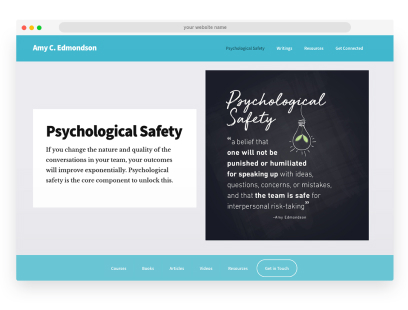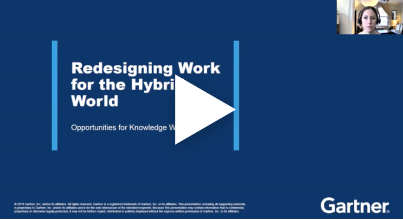Ageism - The Workplace
How employees of all ages can work together to mitigate ageist mindsets and behaviors in the workplace.
Calling everyone in to call ageism out.
Ageism is a socially accepted -ism. It can be overt or covert. Conscious or unconscious. And anyone at any age can experience it – or perpetuate it.
Often, we don’t even recognize words or actions as ageist because they are so ingrained and embedded in our culture. It shows up in our terminology, assumptions, and stereotypes.
Negative actions, like ignoring, marginalizing, dismissing, or interrupting people and making assumptions about their abilities or interests based solely on age can lead to exclusion, denial of opportunities for career advancement, and unwarranted dismissal.
This hurts everyone.

Ageism at work
of people on the higher end of the age spectrum are employed in advertising
According to the Bureau of Labor Statistics, there are currently five generations in the workplace. In advertising, only about half of people at the higher end of the age spectrum are employed, compared to the general population. Additionally, a higher proportion of advertising industry employees experience ageism, compared to a general survey conducted by AARP (75% vs 62%).
Ages during which respondents experienced ageism
As with every other -ism, our intersecting identities impact our experiences and relationships in a variety of harmful ways.
Ageism is insidious: it can affect perception, performance, productivity, promotion, and people across the age spectrum.
Studies show age-diverse groups are more creative and able to solve problems better than non age-diverse groups.
So how do we work together to ensure everyone can thrive at every age and stage?

It starts with psychological safety.
Psychological safety [ sīkəˈläjək(ə)l sāftē ]
Noun
The belief that one can speak up about ideas, questions, or concerns without the risk of punishment or humiliation, even if they make a mistake.
Source: Amy Edmonson, Harvard Organizational & Behavioral ScientistPsychological safety is crucial to fostering workplaces of inclusion and belonging, and is especially important with mixed-age teams. It can alleviate tension between generations and have a major positive effect on morale, engagement, and productivity.
It can be a particular challenge to foster this in a hybrid workplace, but it can be done with intention.
-
Watch
-
See

Amy Edmonson’s website for LI Learning courses and other resources
-
Read
-
Do
Psych safety checklist activity
-
How Can I Alleviate Tensions Between Team Members of Different Ages?
-
Map your personal experiences of psychological safety at work.
-
 Don’t forget freelancers!
Don’t forget freelancers!
Freelancers are an imperative and important group, yet are often left out of agency initiatives, which is a major missed opportunity. The industry has always relied on freelance talent at all levels. Often, older employees who are forced out turn to freelance or contract work. And that dries up as age goes up.
Considering freelancers as a part of your overall talent strategy and including them in all aspects of agency culture can be a good way to make strides in age-inclusion.

Employee experiences
across the age spectrum
We asked employees of all ages and stages to share their experiences with ageism. Here's a sampling of what they reported.
55%
of respondents reported that ageism has a moderate to great impact on interpersonal relationships at work.
Younger workers:
Not being taken seriously
Being talked down to or treated like they don’t know anything
Being told they didn’t have enough years of experience
Told to pad their resume with any experience that could be considered remotely relevant
Being undermined when they could clearly do the job
Denied promotions or stretch opportunities
Lowballed on salary
Expected to work inhumane hours
Older workers:
Ghosted by recruiters and companies
Not being able to land a job despite a qualified resume
Told to shave years off of their resume to avoid the dreaded 2-pager (a coded flag for “old” AKA experienced)
Told they are too experienced or too expensive
Not being respected by younger colleagues
Written off as “out of touch”
Advised to “stay current”
Pressured to retire early or laid off when they hit a certain age (by 45, and sometimes younger, depending on the agency/department)
Research shows that mixed-age teams are key to cultivating a sense of inclusion and belonging, especially for early- and late-career employees.

Age inclusion takes action
Actions we can all take to help combat bias and stereotypes and support emerging talent, hard-earned expertise, and everything in-between.
- Recognize bias.
- Creating awareness requires understanding that there is a problem. You can’t change something you don’t know needs changing, including yourself.
- Take the Harvard Implicit Association Test (choose the age one) to learn more about bias that you might have. (And remember, there’s nothing to be ashamed of — we all have biases. But we can – and must – intentionally work against them!)
- Expand our definition of age.
- In addition to chronological age, there’s the concept of subjective age – how a person sees themselves. This can include life stage, career stage, generation, etc.
- Use this guide to gain a broader, more complex understanding of age.
- Learn the nuances of successfully managing mixed-age teams
- Read and utilize the 10 Principles for Managing Mixed-Age Teams
- Train all levels to understand the benefits of age inclusion & diversity.
- Include age in your modules on anti-bias training.
- Offer the same continuing education opportunities to all employees, regardless of their experience level.
- Create and maintain an intergenerational Employee or Business Resource Group (ERG/BRG).
This robust tool kit has everything you need:
I'm really tired of seeing all the agency virtue signaling about DEI, which usually includes several carefully composed photos of staffers with varying ethnicities and gender identities, and they're all in their 20s or 30s. Ageism is the last -ism that everyone seems okay with.
Source: New & Improved Age Inclusion In Adland Survey 2023
What will it take to eradicate ageism and allow people of all ages to contribute at the highest levels?
What will it take to eradicate ageism and allow people of all ages to contribute at the highest levels? The 3% Conference 2022 Hackathon crowdsourced answers to some important questions. Industry folks weighed in.
Read through and see what resonates. Share with your colleagues and brainstorm ways you can take action.

Check out these checklists
Resources and actions to help you foster an age-inclusive mindset and culture across your organization.





 Watch:
Watch: 